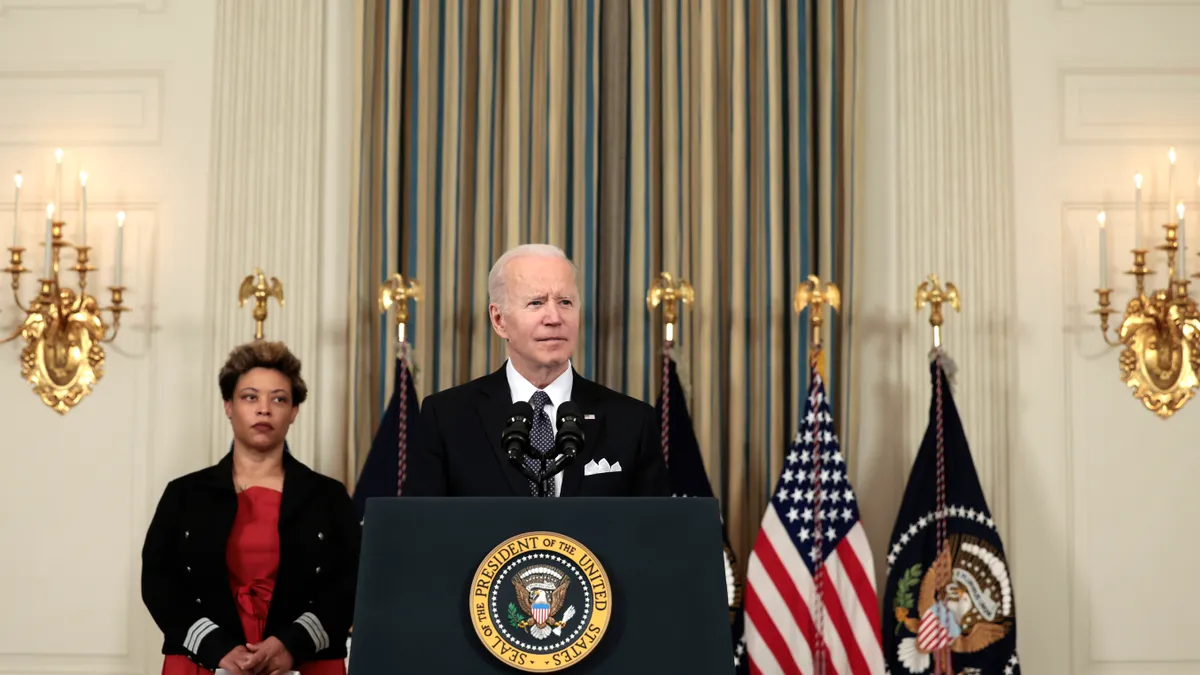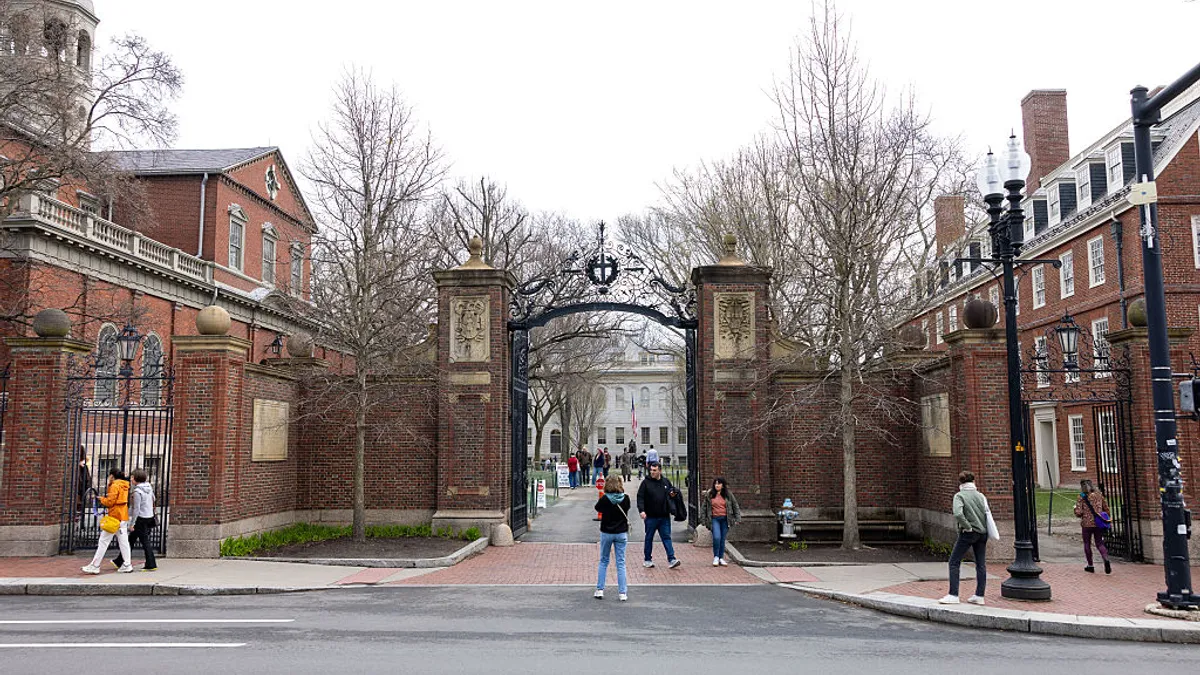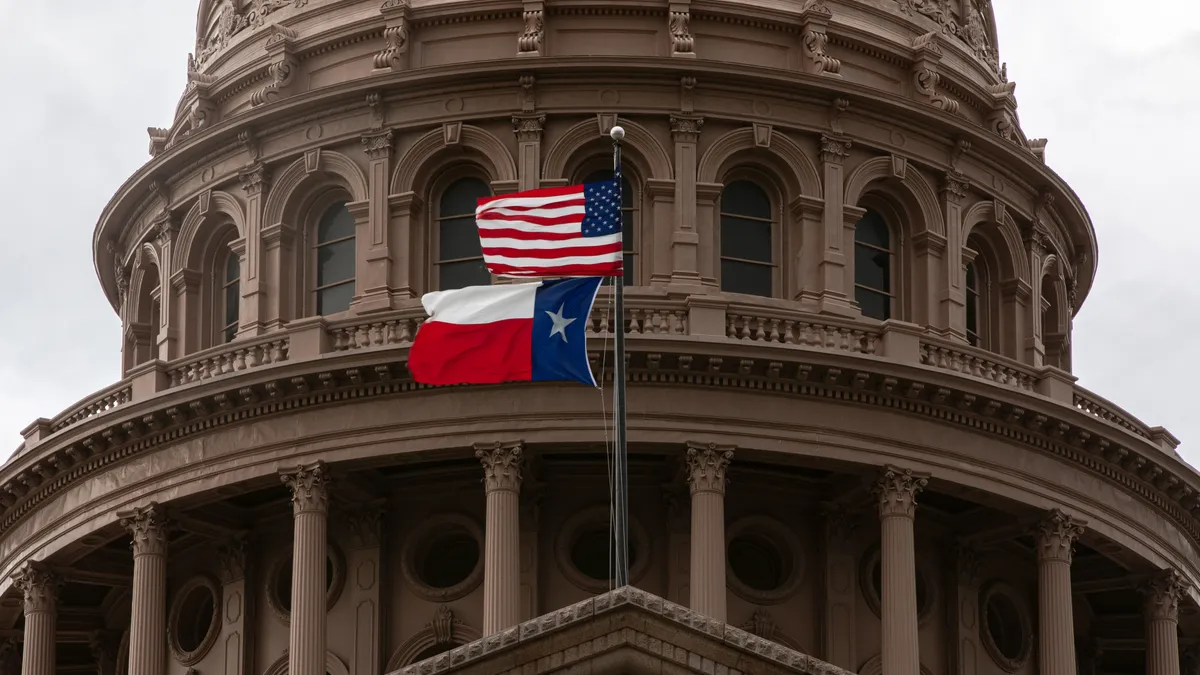President Joe Biden on Monday proposed $88.3 billion in discretionary spending for the U.S. Department of Education in the 2023 fiscal year as part of a broader budget plan moving toward more centrist politics in a midterm election year.
In higher ed, that means little mention of some of the topline issues that animated activists. In lieu of broad student loan forgiveness, the budget would spend $2.7 billion on the Office of Federal Student Aid, an $800 million increase over 2021 in order to fund priorities like better customer service for student loan borrowers. And last year's proposal to make tuition free at community colleges isn't to be found, months after Democrats cut it from their now-stalled push to pass a wide-ranging social spending package.
Biden didn't single out education in a statement on the federal budget request, instead saying that the plan "includes historic deficit reduction, historic investments in our security at home and abroad, and an unprecedented commitment to building an economy where everyone has a chance to succeed."
Still, the new proposal signals the administration's priorities. It would give billions more in discretionary funding to the Ed Department than the $76.4 billion in the 2022 spending package Biden signed earlier this month. But it's substantially smaller than the $103 billion discretionary budget he proposed for the Ed Department last spring.
Read on to learn about three highlights in proposed higher ed spending.
One important note: Because the 2022 spending package was passed so recently, the Biden administration's budget documents only include estimated totals for that year. They include actual appropriations for 2021, which we used for comparison below.
Pell Grant increases
The new budget calls for doubling the maximum Pell Grant by 2029 to help an estimated 6.7 million low-income and middle-income students pay for college.
In the short term, it would use $24.3 billion in discretionary funding to increase the maximum Pell award to $8,670 in 2023. This would be a $1,775 increase from the maximum Pell Grant of $6,895 in 2022, which was itself an increase of $400 from the year before.
"The president is committed to Pell," Undersecretary of Education James Kvaal said during a press conference to discuss the proposal. "It's the foundation of federal student aid and is critical to expanding college opportunities for students from all backgrounds, all races and all incomes."
The White House will also work with Congress to make students covered under the Deferred Action for Childhood Arrivals program eligible for all federal student aid programs, including Pell Grants, Roberto Rodríguez, assistant secretary for planning, evaluation and policy development, said during the press conference. The Deferred Action for Childhood Arrivals program allows immigrants brought into the U.S. illegally as children to remain in the country.
More funding for minority-serving institutions
Biden calls for increasing spending on historically Black colleges and universities, tribally controlled colleges and universities, minority-serving institutions, and community colleges by $752 million over 2021 levels. This would include $450 million that would be dedicated to research and development infrastructure for four-year HBCUs, tribally controlled colleges and minority-serving institutions.
These institutions could also be affected by a $393 million proposal meant to increase historically underrepresented communities in science and engineering fields. That total, 78% above what was budgeted for such efforts in 2021, would go toward priorities like mentorship programs, curriculum design and building research and education capacity at HBCUs and other minority-serving institutions.
Community college and workforce education
Community colleges would receive $100 million to fund efforts to coordinate with workforce development systems and employers. Another $100 million would go toward a new initiative called the Sectoral Employment through Career Training for Occupational Readiness program. It would pay for programs training workers for growing industries.
The administration is also touting $200 million for a Career-Connected High Schools initiative that would make competitive grants to partnerships among local education agencies, colleges and employers to support early enrollment in postsecondary and career coursework, work-based learning and career-connected classes spanning the final two years of high school and first two years of postsecondary coursework.
As for a federal free community college program, Kvaal wasn't ready to dismiss the idea, despite it not being included in this year's budget proposal.
"You can count on the administration continuing to be strong supporters of free community college," he said. "Although it's not in the budget, it is very much an administration proposal. There are active conversations going on in Congress now."
Rodríguez added that funding for community colleges could be woven into some discretionary grant and spending programs.























